Abstract
1. After severe muscular contraction in man recovery of force is largely complete in a few minutes, but is not wholly so for many hours. The long-lasting element of fatigue is found to occur primarily for low frequencies of stimulation (e.g. 20/sec), and is much less pronounced, or absent, at high frequencies (80/sec). The twitch force is an unreliable measure of the state of fatigue. 2. The long-lasting element of fatigue is not due to depletion of high-energy phosphate nor is it due to failure of electrical activity as recorded from surface electrodes. It is probably the result of an impairment of the process of excitation-contraction coupling. Its practical importance for man could be significant as an explanation of the subjective feelings of weakness following exercise.
Full text
PDF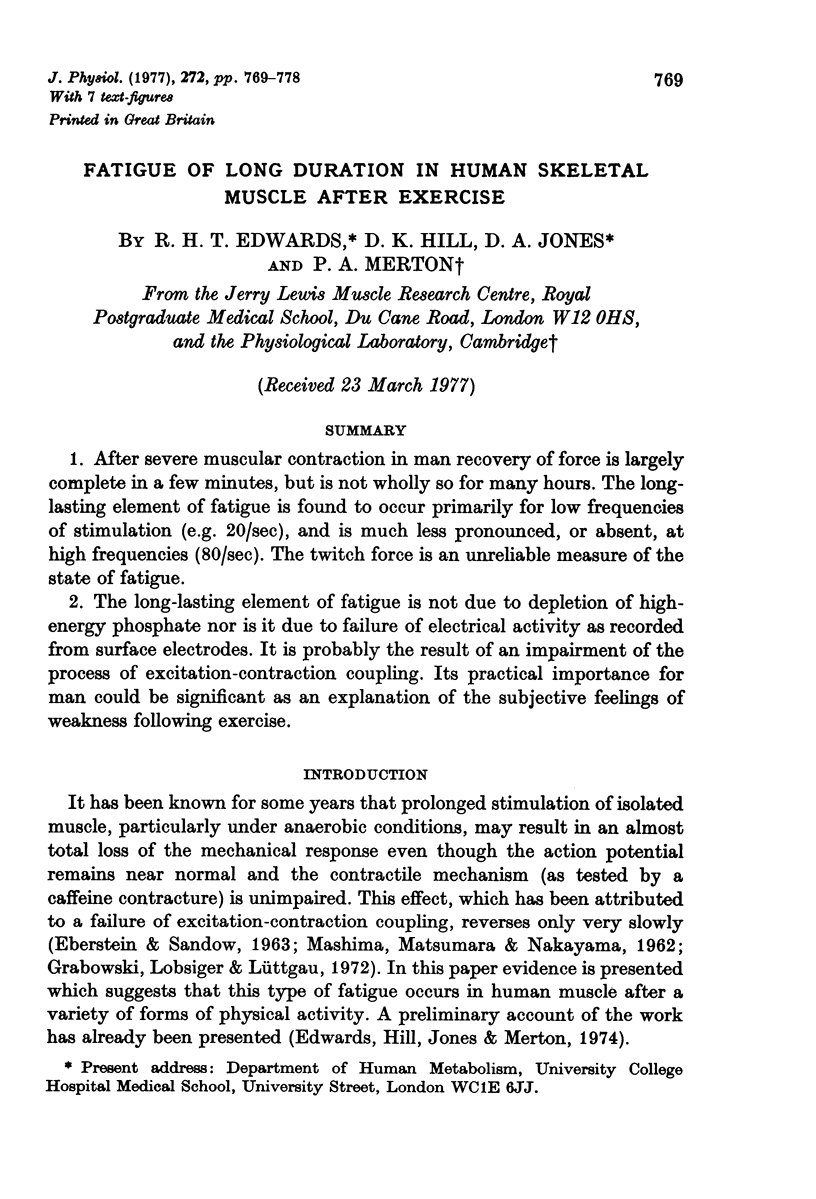
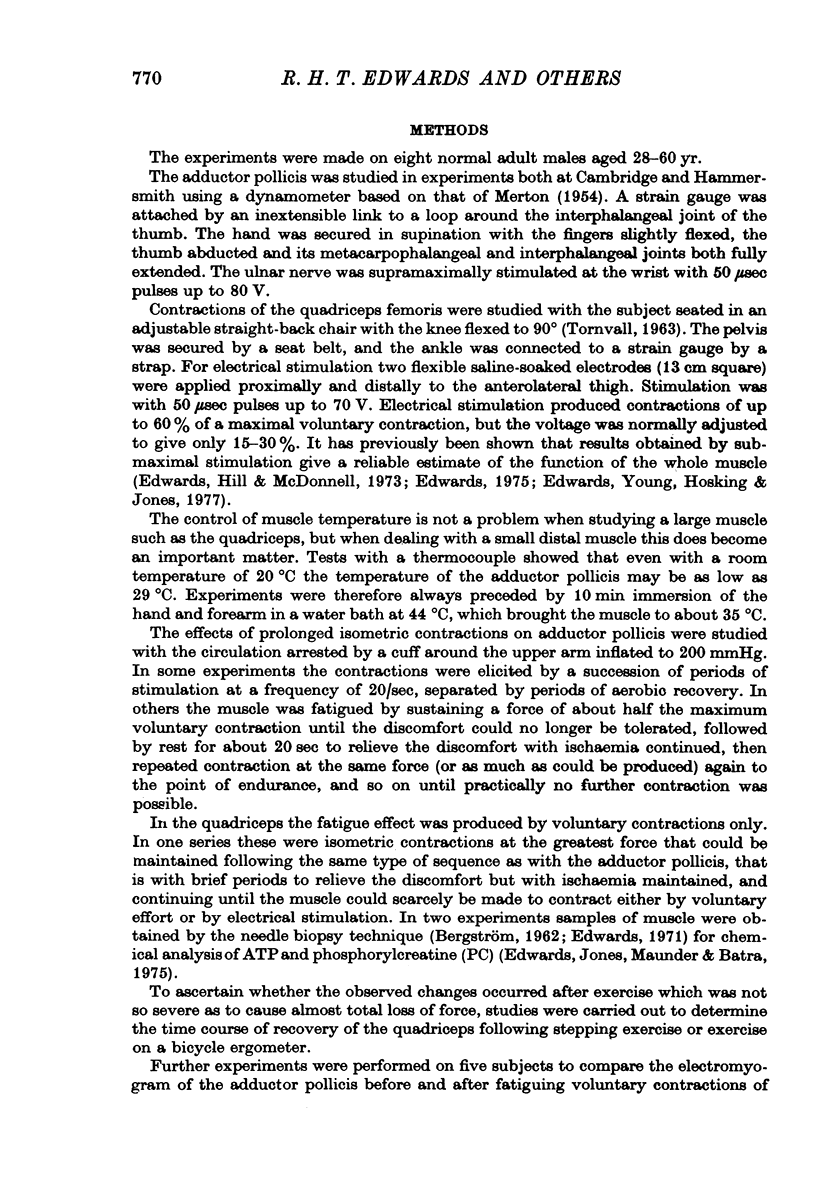
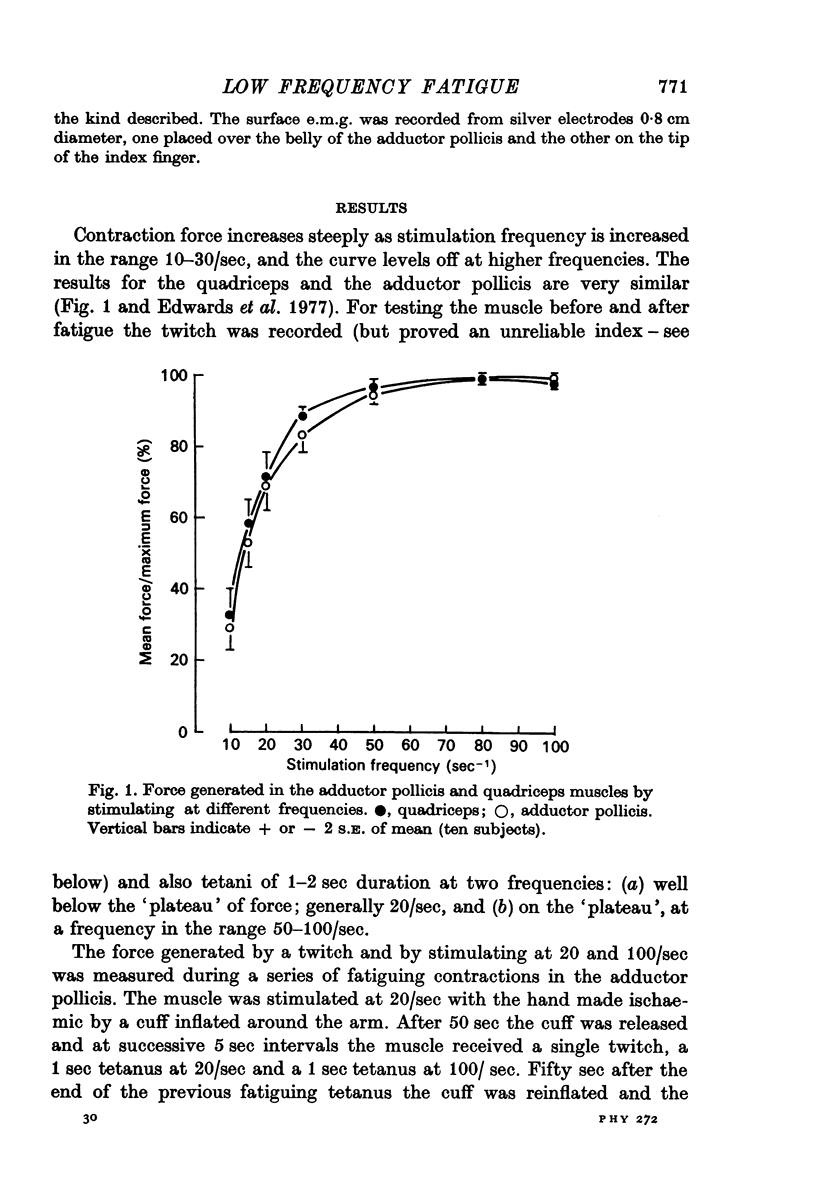
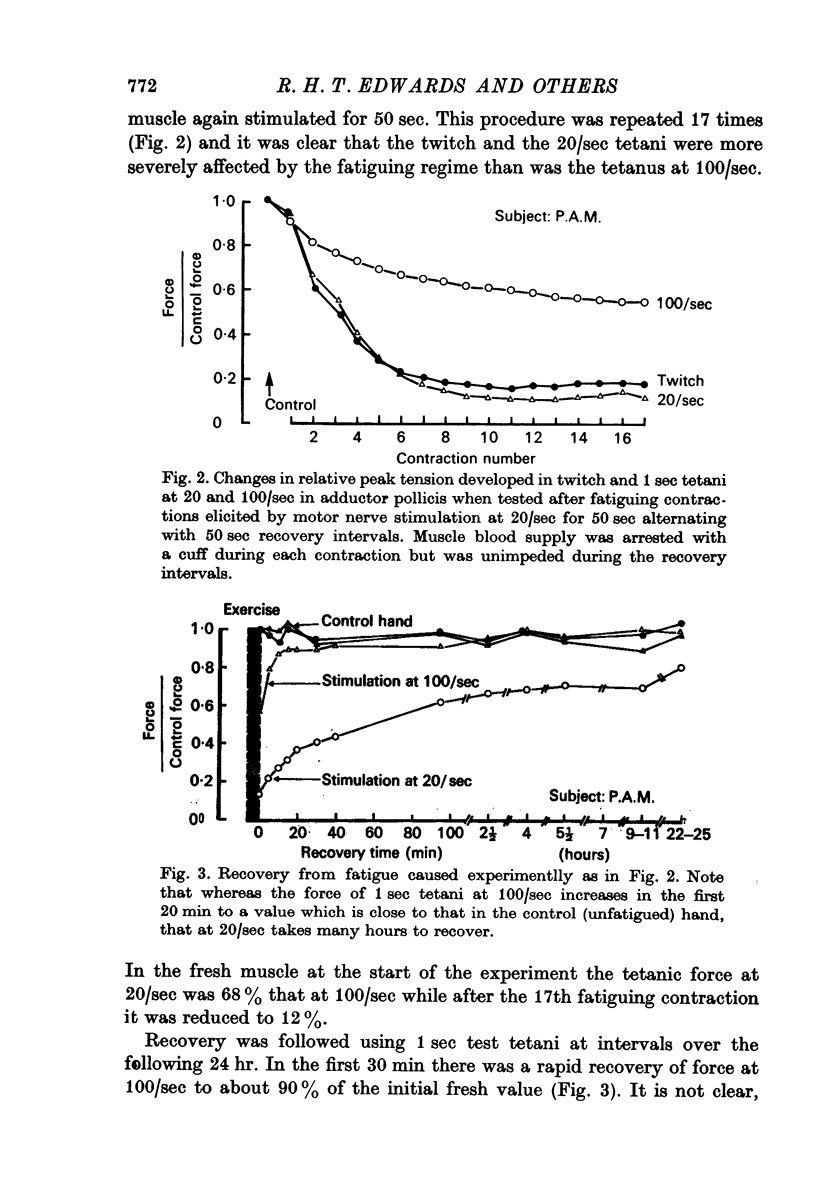
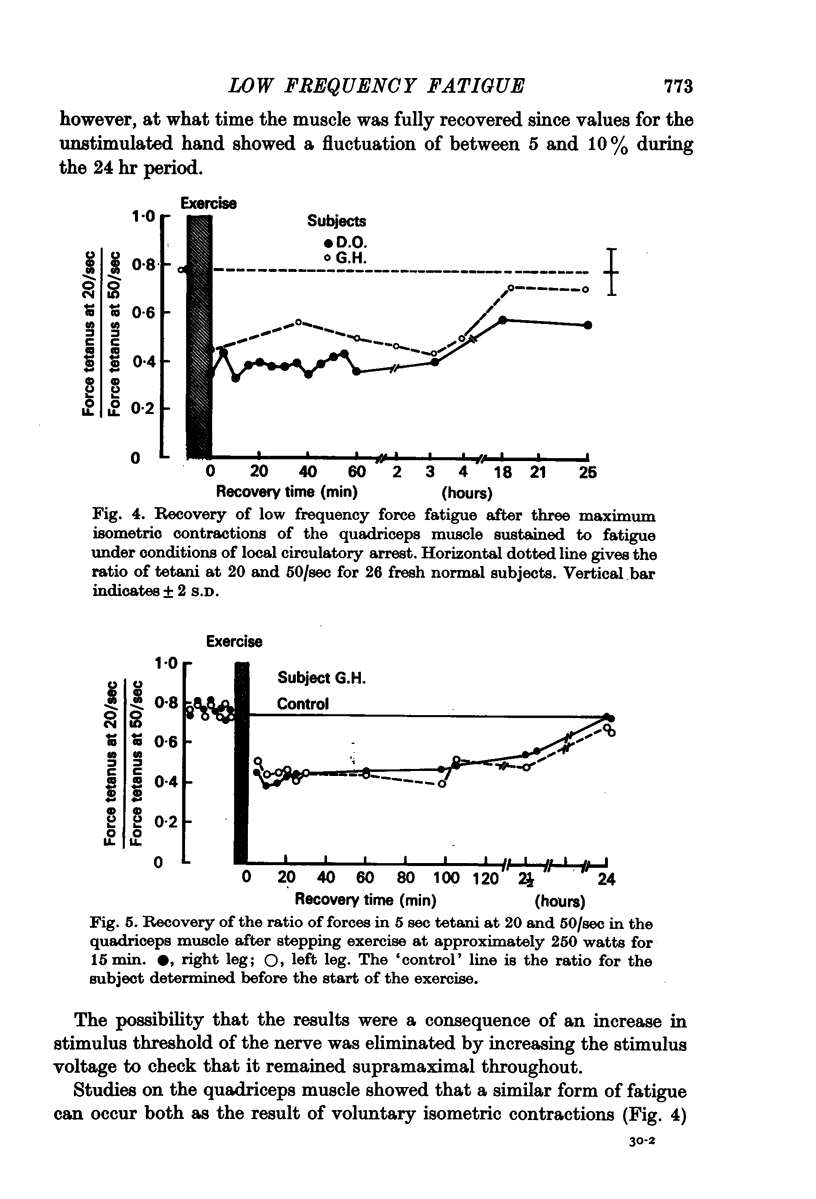
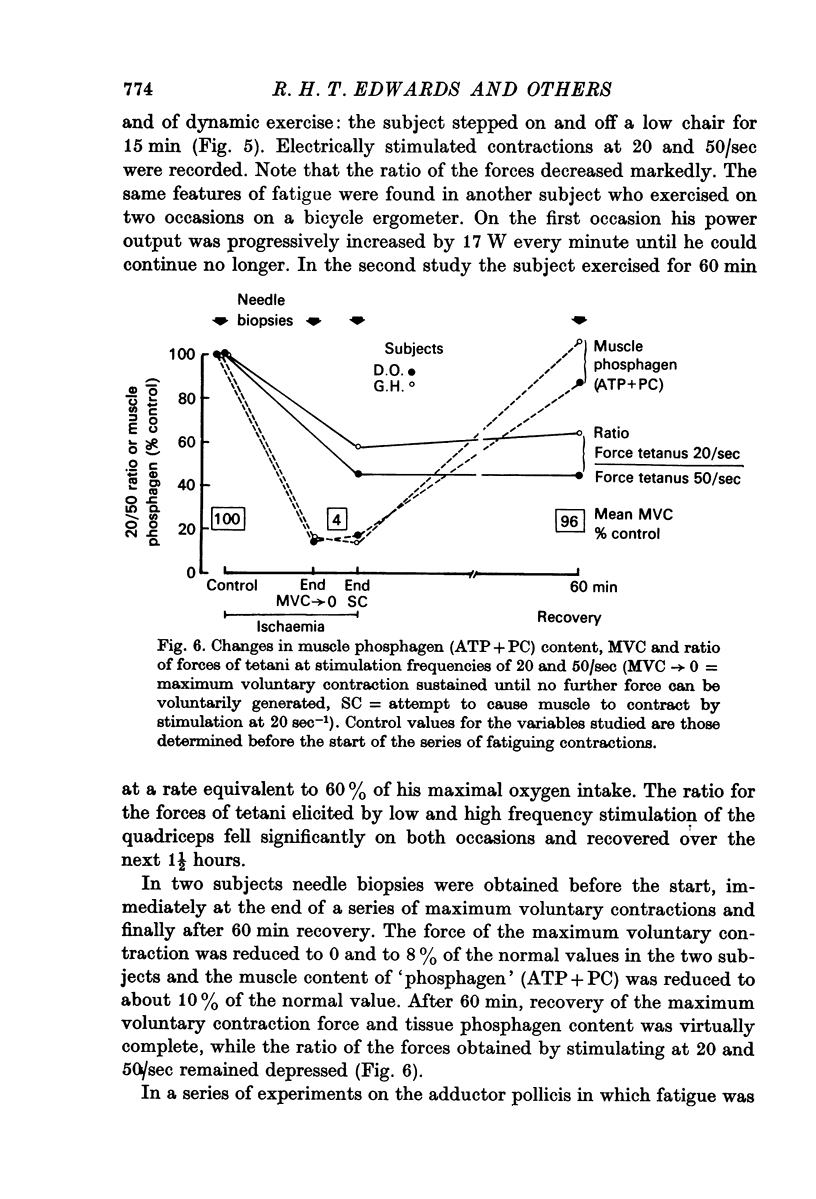
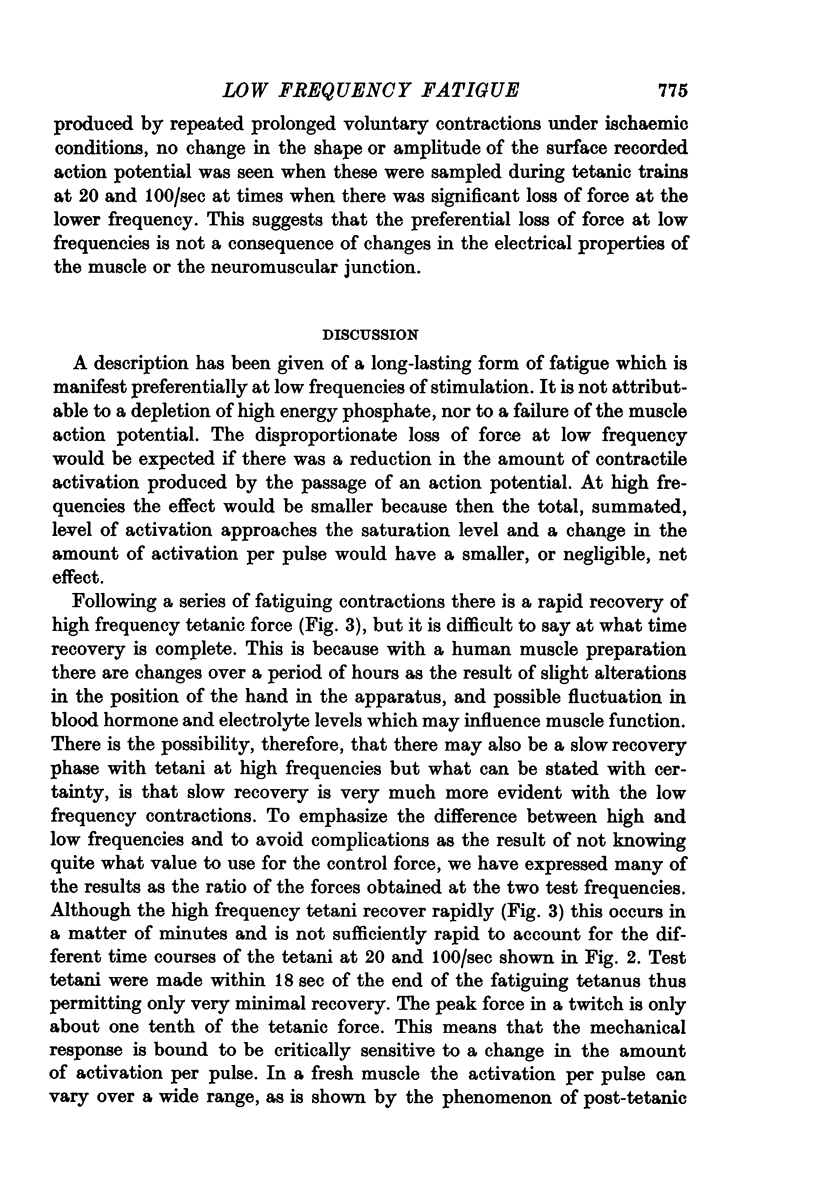
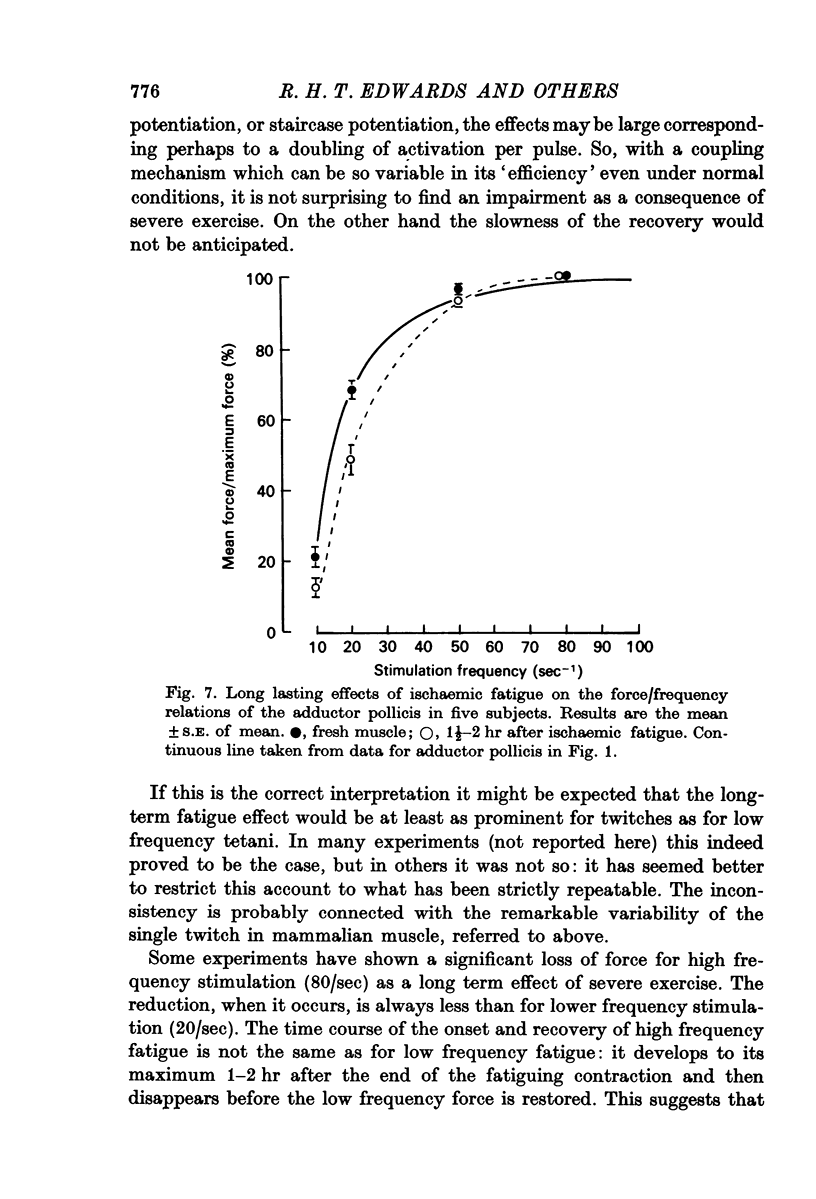
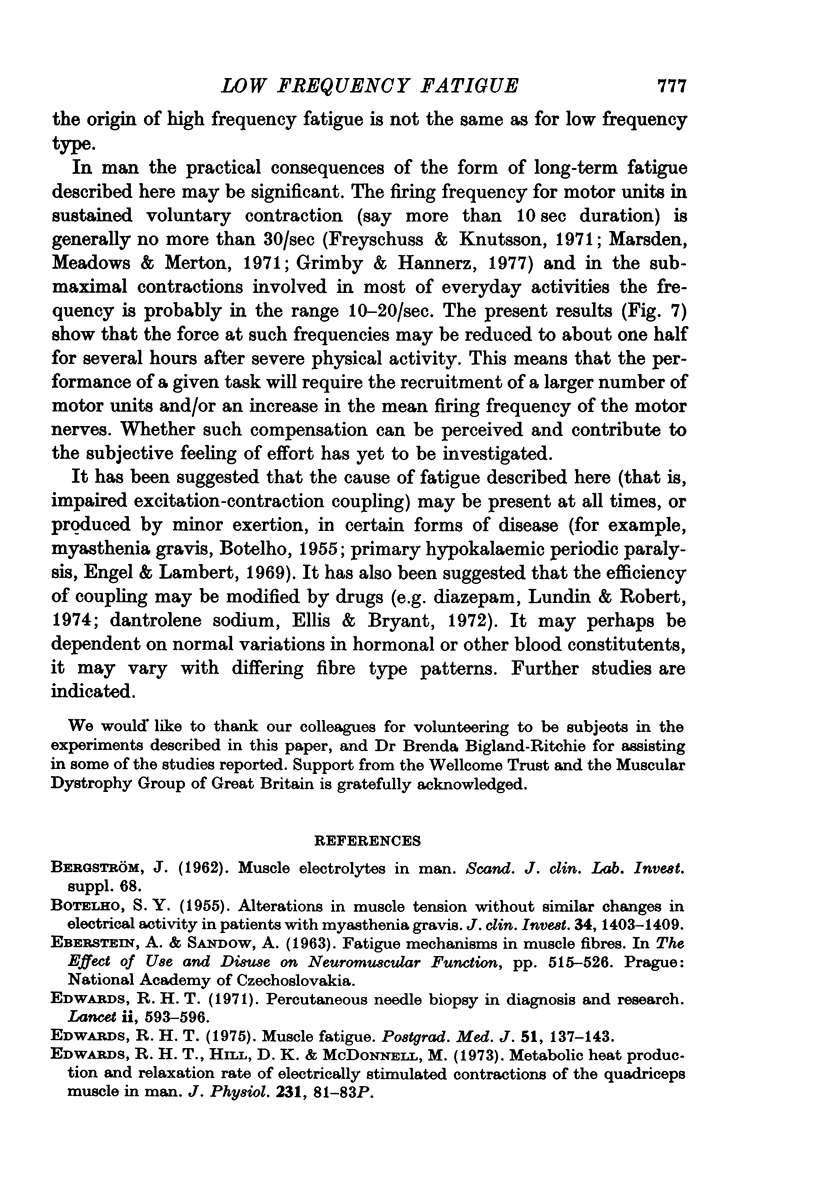
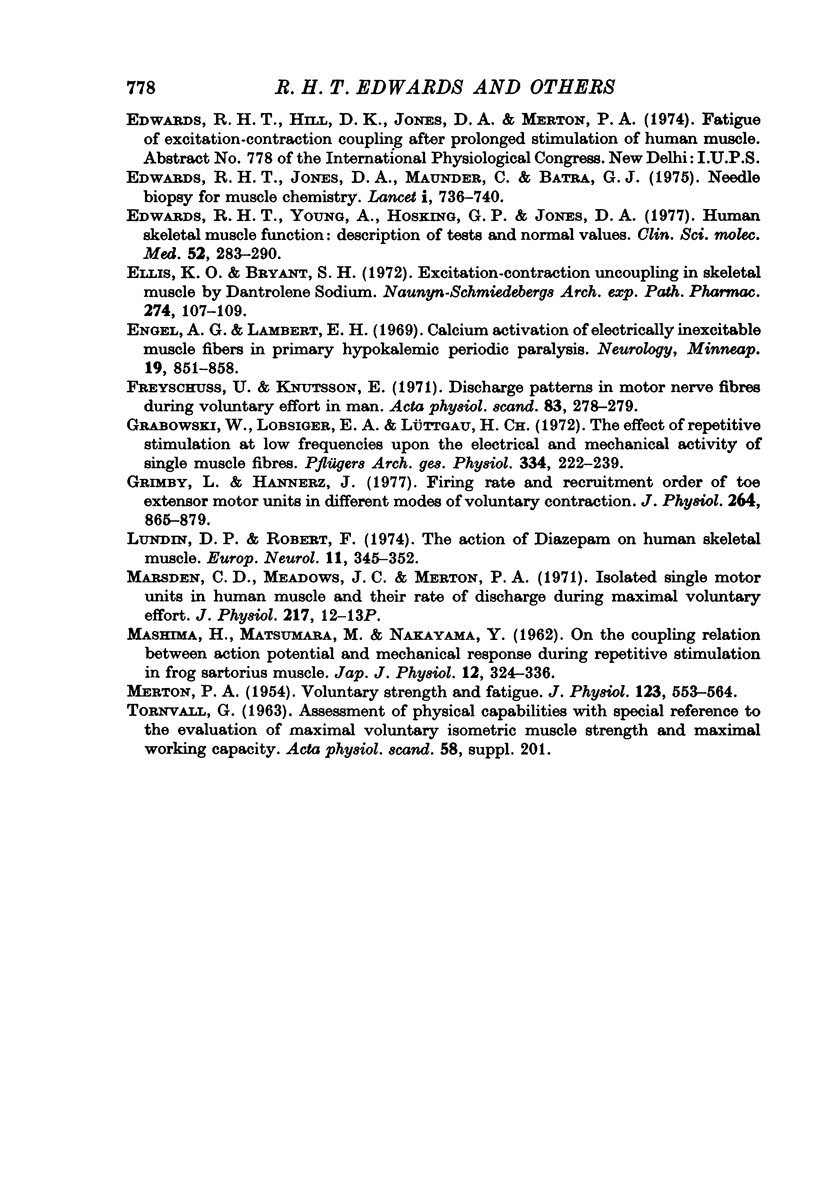
Selected References
These references are in PubMed. This may not be the complete list of references from this article.
- Edwards R. H., Jones D. A., Maunder C., Batra G. J. Needle biopsy for muscle chemistry. Lancet. 1975 Mar 29;1(7909):736–740. doi: 10.1016/s0140-6736(75)91642-6. [DOI] [PubMed] [Google Scholar]
- Edwards R. H. Percutaneous needle-biopsy of skeletal muscle in diagnosis and research. Lancet. 1971 Sep 11;2(7724):593–595. doi: 10.1016/s0140-6736(71)92165-9. [DOI] [PubMed] [Google Scholar]
- Edwards R. H., Young A., Hosking G. P., Jones D. A. Human skeletal muscle function: description of tests and normal values. Clin Sci Mol Med. 1977 Mar;52(3):283–290. doi: 10.1042/cs0520283. [DOI] [PubMed] [Google Scholar]
- Ellis K. O., Bryant S. H. Excitation-contraction uncoupling in skeletal muscle by dantrolene sodium. Naunyn Schmiedebergs Arch Pharmacol. 1972;274(1):107–109. doi: 10.1007/BF00501011. [DOI] [PubMed] [Google Scholar]
- Engel A. G., Lambert E. H. Calcium activation of electrically inexcitable muscle fibers in primary hypokalemic periodic paralysis. Neurology. 1969 Sep;19(9):851–858. doi: 10.1212/wnl.19.9.851. [DOI] [PubMed] [Google Scholar]
- Freyschuss U., Knutsson E. Discharge patterns in motor nerve fibres during voluntary effort in man. Acta Physiol Scand. 1971 Oct;83(2):278–279. doi: 10.1111/j.1748-1716.1971.tb05077.x. [DOI] [PubMed] [Google Scholar]
- Grabowski W., Lobsiger E. A., Lüttgau H. C. The effect of repetitive stimulation at low frequencies upon the electrical and mechanical activity of single muscle fibres. Pflugers Arch. 1972;334(3):222–239. doi: 10.1007/BF00626225. [DOI] [PubMed] [Google Scholar]
- Grimby L., Hannerz J. Firing rate and recruitment order of toe extensor motor units in different modes of voluntary conraction. J Physiol. 1977 Jan;264(3):865–879. doi: 10.1113/jphysiol.1977.sp011699. [DOI] [PMC free article] [PubMed] [Google Scholar]
- Ludin H. P., Robert F. The action of diazepam on human skeletal muscle. Eur Neurol. 1974;11(6):345–352. doi: 10.1159/000114333. [DOI] [PubMed] [Google Scholar]
- MASHIMA H., MATSUMURA M., NAKAYAMA Y. On the coupling relation between action potential and mechanical response during repetitive stimulation in frog sartorius muscle. Jpn J Physiol. 1962 Jun 15;12:324–336. doi: 10.2170/jjphysiol.12.324. [DOI] [PubMed] [Google Scholar]
- MERTON P. A. Voluntary strength and fatigue. J Physiol. 1954 Mar 29;123(3):553–564. doi: 10.1113/jphysiol.1954.sp005070. [DOI] [PMC free article] [PubMed] [Google Scholar]
- Marsden C. D., Meadows J. C., Merton P. A. Isolated single motor units in human muscle and their rate of discharge during maximal voluntary effort. J Physiol. 1971;217 (Suppl):12P–13P. [PubMed] [Google Scholar]
- Wells H. M. A trial of fenfluramine (PACaps) and diet in overweight diabetic patients. Postgrad Med J. 1975;51 (Suppl 1):137–137. [PMC free article] [PubMed] [Google Scholar]


